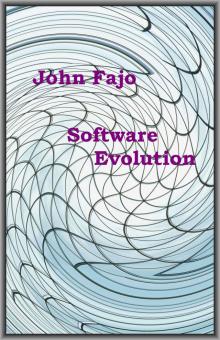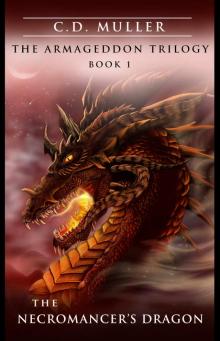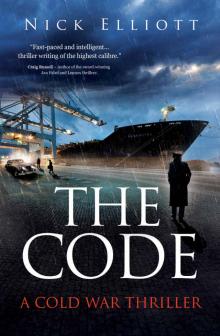Arriving in the big city one may find oneself lost, especially if one is to come across an elusive man like the baron, who never reveals himself. Yet there is no escape from destiny as the events unfold, and the protagonists confront each other for multiple showdowns that are to change their lives and the course of history.John FajoSoftware EvolutionAbstractAs the title indicates this is a book about software evolution. Software evolution has two meanings and consequently the novel has two continuous parallel themes, one is thriller-like and its main purpose is to give a supportive framework for the other, which is about development in the thinking manner of a person at childhood’s end, this being called software evolution. Besides these, the book attempts to pinpoint the misconceptions people have about the main essence of science, any science for that matter. Here the second meaning of software evolution emerges.The book is organized into four parts and follows the classical scheme: introduction, main theme, interlude and conclusion. The events are depicted more as slides or short footages, the time elapsing in-between is irrelevant, and time hasn’t the usual meaning due to the second theme; it’s linear from the characters’ point of view, but has non-linear aspects otherwise.In ‘The inspector’, we have a build up to the main theme. The protagonist, the inspector arrives in a big city, where he is faced with a different world, his ideas are challenged.In ‘The scientist’, the main theme unfolds. We step into the world of a scientist, not a joyful inventor or a forgetful genius, but an emotionless and well-organized person on an island secluded from the rest of the world. Most of the events are presented from another character’s point of view, which allows perspective to be obtained. It is also vital for the second theme, for this other, nameless person is the one the scientist talks to, presents his ideas, fears, love and hate.In ‘In deserted nowhere’ our nameless character is banned, has to travel to a far away planet. He is entirely alone, only a dream world helps him survive his solitude. Romanticism is defended; romanticism the scientist criticized in ‘The scientist’. This part also allows the thriller theme to continue several years later than it had ended, without any abrupt jumps.In ‘The beggar’, we have the conclusion, childhood’s end. The two main characters confront each other for the last time.John Fajo, 1996

 The Necromancer's Dragon
The Necromancer's Dragon The MILF Man Deliveries Series- Complete Set
The MILF Man Deliveries Series- Complete Set Vicious Revenge (Vicious City Book 4)
Vicious Revenge (Vicious City Book 4) Sugar and Spice
Sugar and Spice Zombie Agent
Zombie Agent Murder at First Pitch
Murder at First Pitch The Code
The Code Ozlander
Ozlander